/
Link building
/
0 min read
What is good link building? [2022 guide]
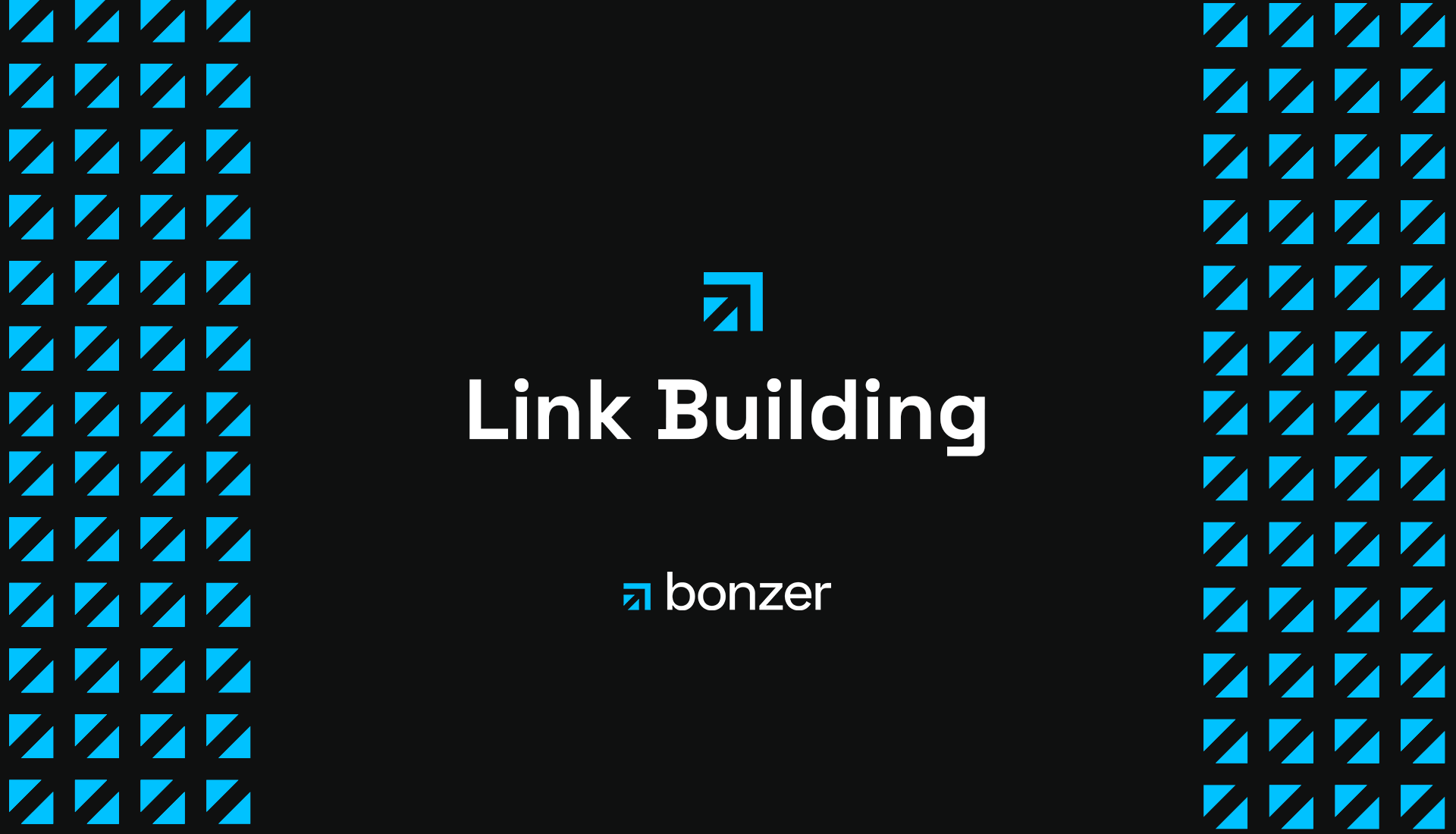
Come from sites with high domain authority (Domain Rating)
Come from a credible site
Are placed in a relevant context
Link building is one of the most important practices in search engine optimization (SEO). Link building is something Google focuses on immensely, and this makes it completely unavoidable if you want to be successful with your SEO work.
However, there is a big difference between good and bad link building. Therefore, we've put together some guidelines for you to follow if you want your link building strategy to be successful.
What is link building?
Link building is the practice of purposefully going after building authority on your website through links from other websites. These are also referred to as backlinks.
In this context, people often talk about building links. When you "build links", you work to convince websites to link to your website with the goal of gaining higher rankings on Google. This process is absolutely fundamental in order to achieve great SEO results.
In this way, link building is based on what I would call the "virtual like". In other words, it's a way in which others will recommend your content above others'. This also means that link building is based on great content.
As with many other things, we as consumers are more likely to choose a product or service if credible sources recommend it — and the more credible sources, the better. The same applies when it comes to SEO.
The more authoritative and relevant sites link to your services, the higher search engines like Google will agree to rank your company's website — and as you know, this is how you achieve digital growth in 2022.
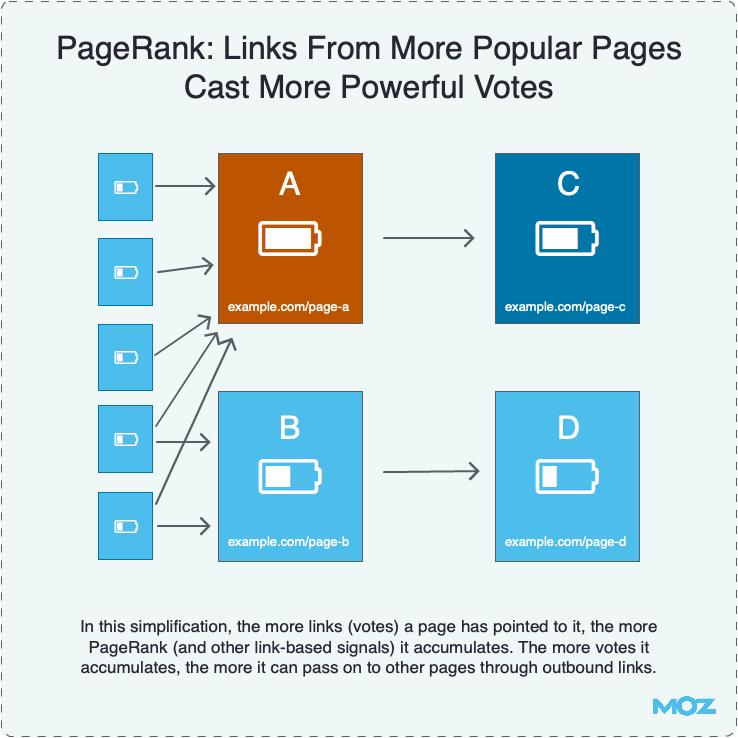
Internal link building
Once you have built authority on your website, it's important to ensure that your internal link structure is also strong. This is because it's important to link internally to the pages on your website that are most important for your users to see.
This will make it easier for search engines like Google to understand the layout of your content "landscape". This practice is also called internal link building.
Where do links come from?
Links can come from many different sources. You could get a link from a media outlet that has written an article about a topic using material from your site. It could be a study, a guide, or something completely different. In this context, the media outlet might link to you as a source reference.
It could also be a direct recommendation, or a product review in which you link to the product on your website.
The goal, of course, is for potential customers to go through the link and end up on your page. The stronger the link, the more value it gives in Google rankings — more on what a strong link is later in this guide.
This is the process that many go through when doing link building. Once this is done, it can all be summarized in various indexes.
At Bonzer, we work with different SEO tools that use “DR”, which stands for Domain Rating. DR is not a Google metric, but it is still based on Google's guidelines for the value of a link.
Domain Rating is one of the numbers (units of measurement) we use when we need to measure how strong and credible a domain is. The DR scale goes from 1-100, where 100 is the highest value (the most authoritative page you can get a link from based on the number and strength of the links that point to the page).
Development in “referring domains”
Below, you can see an example of the development of referring domains for a given page. This is an expression for all domains that link to a given page:
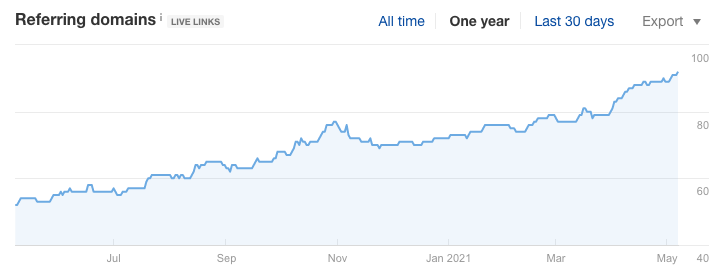
Once upon a time when link building didn't matter
Let's take it back a bit, to a time when link building didn't matter and rankings were based solely on content.
It was a time when Yahoo was bigger than Google (yes, that's hard to imagine). Through the 90's, a lot of new search engines started to appear, and despite the fact that they were all revolutionary, their indexing was based exclusively on content, and not in the same way as Google indexes content today.
[inpost_cta]
PageRank joins the landscape
When Google came up with PageRank, they significantly revolutionized the search engine industry. PageRank is part of the larger Rank Brain, which uses Machine Learning to decide how to rank different search results.
This means that PageRank, in a manner, has actually created the practice of link building.
The illustration below might help you understand how it all works together. If not, I don't blame you.
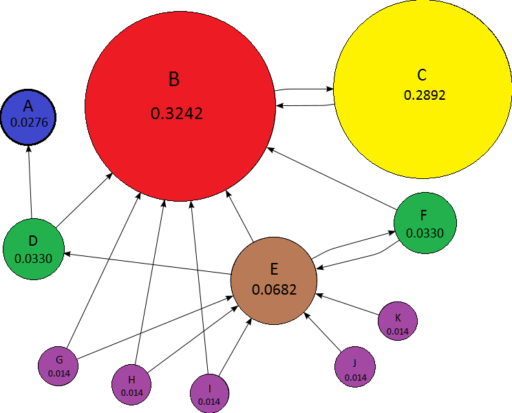
What's interesting about the illustration above is the "C" circle. Notice how big it is compared to "E", which has many more links: "C" is about 4 times larger, but has only 1 link. This is because the one link it has comes from "B", which is extremely strong, and only links to one other page, i.e. "C".
What this shows is that it is no longer the quantity of links that is important, but the quality of those links — and that's how things have been for some time.
Marketers and website owners are slowly beginning to understand how these things are related, and those who were quick to crack the code and create a strong domain have been able to generate a lot of traffic to their site.
That is still the case today. We still find that very few actually understand how everything is connected, and how to best create synergy between the many different elements.
Google Penguin increases relevance
Once PageRank was in place, of course, we started to see a lot of positive changes in search results, but there was still an overall problem.
There were still many websites that "cheated" their way to good rankings by getting links from large, generic pages which had no relevance to the given page, or which were paid links.
So as a web shop that sells clothes, you could get a link from a major car manufacturer — the fact that it had no relevance to your website would make no difference. But that all changed when Google Penguin was introduced. Google Penguin's most important task is to scrutinize the relevance of the links you build. So not only do your links need to be strong: they also need to be highly relevant.
An example of this could be a web shop that sells high-end clothes for men. This web shop is suddenly featured on Asos' fashion feed with a link through good outreach. This is a super strong link with huge relevance to the shop.
You can see Asos's link profile and DR in the image below.

We usually say that a good backlink in article form has a DR of min. 20. 87 is therefore super good, and it is the type of link that will really give your web shop a boost.
Bad link building
Just before I get to what good link building is, it's important to clarify all the bad link building tactics which, to this day, still try to cheat Google's algorithm. Fortunately, Google is getting smarter and smarter — which is why these “clever" tricks are becoming less useful.
Although there is no official reference work with bad links, I've put together a list which, based on my experience and statements from Google, will hopefully still give you an idea of what bad links are.
Links from unknown pages with no traffic
It's probably not surprising to hear that links from pages with no visitors are bad links. Without visitors, no one will see the link — and that leaves no one to click on it. In most cases, there is also a notable correlation between low traffic and weak link structure — i.e. pages with low Domain Rating and URL Rating — which is why there is not much link juice to distribute.
Unreliable links
You don't want to build your link structure on a foundation of links from sites that are untrustworthy. To use the example of reviews again: if a source is unreliable, a good review from that source is not worth much. Untrustworthy links could e.g. be links from "http" pages which, unlike "https" pages," are not secure.
I would also call untrustworthy links "purchased links". This is because if one company can buy into a link, then any other company can do the same — and then the idea of mentioning and linking to relevant content is lost.
Links without relevance
If the link has no relevance and is completely doesn't work in context of the page, it is also without value. The above example of a clothing store getting a link from a car dealer is applicable here. In the old days, that link might have held value, but in 2022 it will not give much value to the clothing store, as the two sites have nothing to do with each other.
Good link building: “The triangle of link building”
Since the introduction of PageRank and the relevance of links, many have tried to find the perfect model for link building. Because anyone with knowledge of SEO knows that without strong link building, your page will not get far.
That's why we're introduce our home brew term: "the triangle of link building". This is the structure that you should follow if you want to constantly provide the strongest links possible to help your site rank in the right places — while avoiding costly penalties from Google.
Good link building includes links that:
1. Links from sites with high domain authority (Domain Rating)
The higher the domain authority (also referred to here as Domain Rating), the more value there is to forward. This is because Domain Rating is based on the strength of links. In other words, in order for a domain to pass on link juice, it must have some to give.
2. Links from trustworthy sites
Trustworthy sites can be any site that 1) is secure, and 2) is respected for the content it brings — e.g. a professional news outlet or the like. You could also look at it this way: the harder it is to get a link from the page, the more credible it is when you finally get that link.
3. Links that come in a relevant context
The last part of the link building triangle is relevant links. When you get a link, you want to place it in a relevant context where it makes sense for that link to be mentioned. For example, if a blogger writes about summer fashion, it makes perfect sense to link to summer dresses — hence a relevant context.
Summary of “the triangle of link building”
Your link building strategy meets the three golden points — high domain authority, credibility, and relevance — you will always be ahead of your competitors. You will never be behind, as your link structure will build on natural links.
Look at it this way: would you rather have 10 good reviews of your business from anonymous sites without traffic? Or would you rather have one good review from a renowned news outlet like Politiken or Berlingske? The answer should be obvious. And that's exactly how Google thinks — so what is logical thinking to you is also what Google employs when viewing your digital profile.
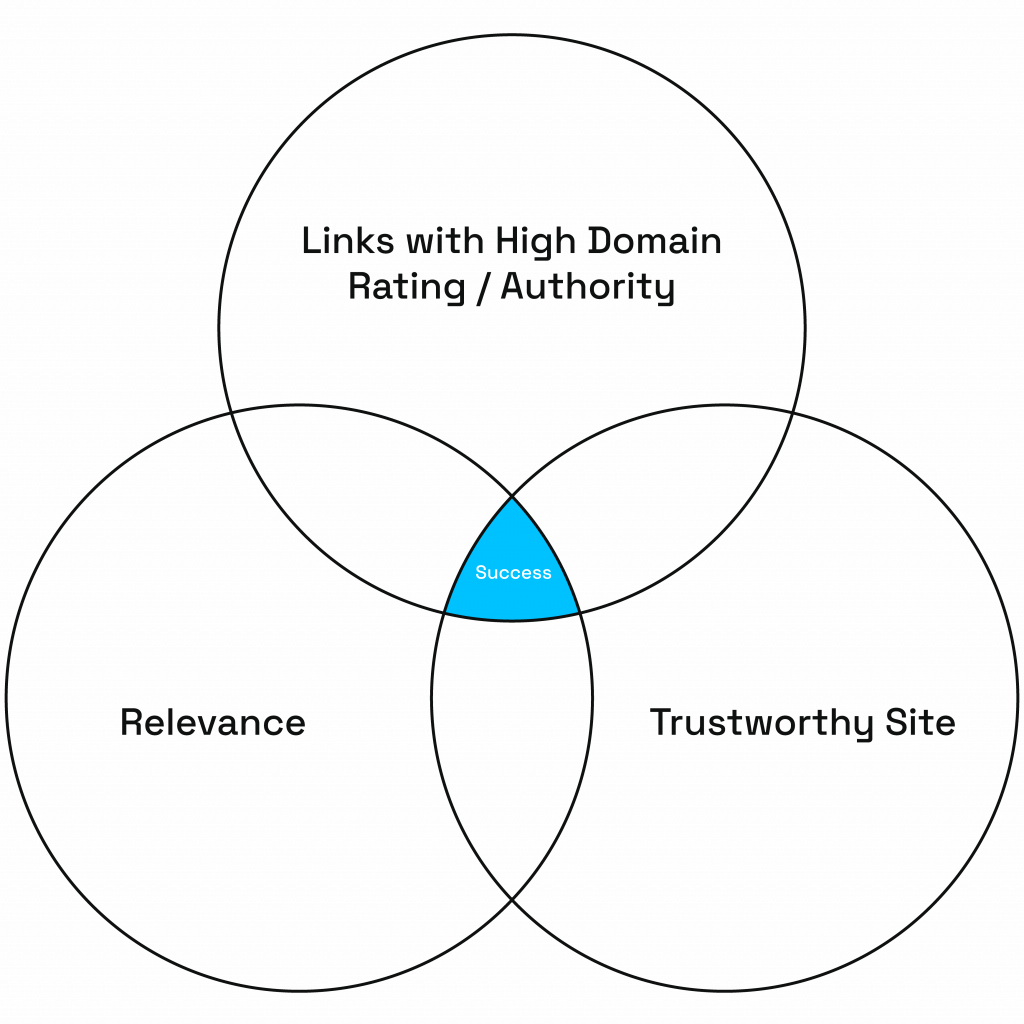
To check the value of a link, you should ask yourself the question: “Would I want this link if Google did not exist?“
How do I get started with link building?
Is you may have guessed, a lot of knowledge goes into good, strong link building. Unfortunately, link building is not something you can simply read about for 10 minutes before going out and doing it.
Firstly, it requires a lot of knowledge, but secondly, it also requires a strong network or a back catalogue of good links. If you know someone who has a news outlet that writes about something within your niche, then it is obviously a good idea to give them a call, but there is often a limit to how many of these relationships one has. Therefore, good outreach is essential, as good link building is basically about PR.
Outreach
If you want to do your own link building, outreach is a good place to start. When you do outreach, you go out and contact a lot of different people and companies who have a page, a blog, or something else that you would like to have linked to your page based on the content on that page.
Outreach can consist of e.g. guest posts — i.e. offering a page within your field to write a post on their blog that can give them traffic in exchange for a link from their page to your own.
It can also consist of adding a link in the form of a source reference to you based on relevant content — e.g. if a company has written an article on online marketing and this article mentions link building. Then I could reach out to them and mention that I have written this guide, and that they're welcome to use it as a reference for their readers to learn more about the subject.
There are many ways to do this, but it is not easy.
Outsource
You can also choose to outsource your link building to an agency such as Bonzer. We have a very large network, which, through our passion for outreach, we work to expand every day.
So that means you often end up going out and investing 50-100 hours in something that you could have paid a few thousand for?
We often see companies pay an expensive opportunity cost when starting from scratch instead of simply outsourcing tasks such as outreach and link building. But as these are difficult, time consuming tasks that require expertise and experience, outsourcing them often pays off.
What is the price of good Link building?
This question is a bit like asking, "How much does a car cost?" How strong a domain do you want to achieve, and what industry are you in?
Because the price of good link building depends on the needs of your company, we usually always sit down for a talk about those needs prior to pricing our link building services.
Otherwise, I hope it everything else makes sense — and, if nothing else, that you have learned a little bit about link building.
Can I buy links?
At Bonzer, we are often asked this question: "Can I buy links online?" There are two parts to the answer. You should not buy links from websites that sell links. These are typically PBN links (Private Blog Network), which are based on pages made to link back and forth between each other.
This is directly against Google's guidelines, as it is considered a manipulation of Google's algorithm — something that Google often focuses on in its webmaster guides.

As I mentioned above, Google has implemented a number of algorithm changes which mean that quantity is not the solution when it comes to link building — so you should always think quality over quantity. Google can see the relevance of your links, and the strength of the domains from which you link.
Not only do you not get any value out of purchased links; you will actually damage your domain and potentially end up losing large portions of your traffic.
Okay, so I can't buy links, right?
You can technically buy links, but they must be in the form of sponsored articles — however, this is not good link building, as it is direct payment for a link. There are also many instances where people buy links directly, without it being shown as "sponsored content". This is actually illegal, cf. the Marketing Act.
You can also buy services from an SEO agency that, through outreach, provides strong and natural links — links that can really make you rise in the Google rankings. Links based on outreach are based on natural relevance.
Link building is one of our standard services at Bonzer, which means that we lift our customers' domains with organic strategies, and we always follow the latest guidelines from Google.
How natural link building affects results
Below, you can see an example of a domain that has built a good DR with organic link building.
Unlike many other sites, New Nordic in the example below has "only" 100 referring domains, and that is more than enough to get a super strong domain.

The increase in DR has resulted in a subsequent major increase in organic traffic.
To highlight another example, in the images below we can also see a clear correlation in the development of links over a month compared to the development in organic traffic for Artland.com:
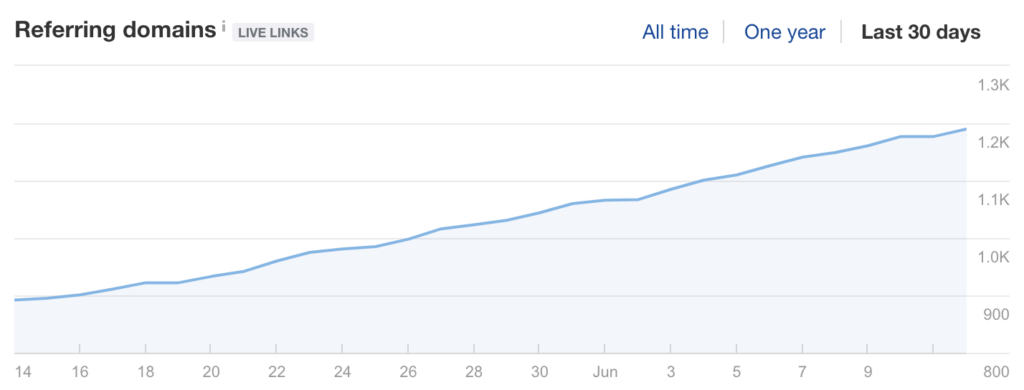
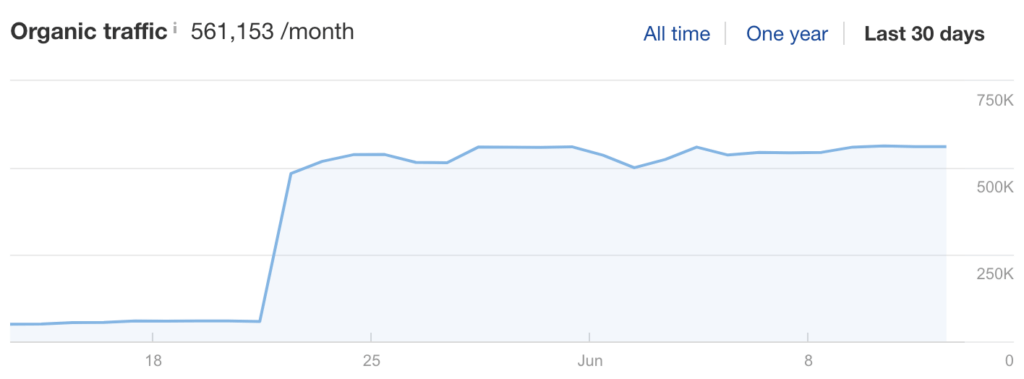
As can be seen above, Artland leaped upwards in rankings in pace with the development of new links. Although one can never be 100% sure of Google's algorithm, experience shows that relevant and natural links from authoritarian sites can move mountains in the search engines.
You can read our Artland case here and see which links helped push Artland's growth upwards.
Conclusion
In conclusion, link building continues to be one of the most difficult practices within SEO, and it is unfortunately not something you just do in a few days.
It requires time, resources, and networking.
In our view, the cheapest solution is to outsource your link building to someone who knows what they're doing.
What is link building?
Link building is a practice within search engine optimization (SEO) based on creating authority for websites via links. A link is seen as a "recommendation" of content, which search engines like Google use in their search results considerations.
How do I get links?
You get strong links by continuously producing quality content. In addition, content must be promoted by outreach, so you ensure the desired channels will see it. This is because it will increase the likelihood that other sites will see the content — and hopefully also link to it.

CPO & Partner
Thomas is the CPO (Chief Product Officer) and Partner at Bonzer, which means his day-to-day focus lies in constantly analyzing Google's algorithm and developing SEO as a product. Thomas has worked with SEO for several years with a strong passion for sharing his knowledge on how businesses can best implement SEO into their operations. In addition to Bonzer, Thomas contributes his expertise to readers at publications like Search Engine Journal, DanDomain, and Detailfolk. He also teaches Digital Media Strategy at Copenhagen Business School and SEO at DMJX in Copenhagen. If you have any questions or requests regarding the SEO universe, feel free to contact him at [email protected].

Let us show you an SEO strategy that can take you to the next level
A brief meeting, where we review your position in the market and present the opportunities.
Let us show you an SEO strategy that can take you to the next level
A brief meeting, where we review your position in the market and present the opportunities.